Collectability in Riftbound: Origins
We on the Riftbound team love opening booster packs. Even though we’ve done it dozens, hundreds, maybe thousands of times, that feeling of cracking open a crisp pack never gets old.
But breaking open packs is just the tip of the iceberg, and you already know what lies beneath the surface: the art of collecting. Of building a library of cards that you can mix and match to create any and every deck imaginable.
To honor this fabled pastime of cracking packs and assembling card libraries, today we’re going to cover the Riftbound collector experience.
That means we’re walking through…
- What’s in a booster pack?
- What do different card rarities mean?
- How do these rarities work?
Plus, we’ll hint at some special surprises that could be waiting for you in Riftbound’s first set, Origins. Let’s dig in!
Card Rarity - Summary
Riftbound cards have four different functional rarities. What’s a functional rarity? Well, it’s the level of rarity that normal cards have, aka the rarity of everything that’s not an alt-treatment card.
A card’s functional rarity is indicated in two ways. First is the card’s frame, the hextech filagree that runs around the edge of the card. The other way is the gem at the bottom of the card. Here’s how you can tell them apart:
- Common Cards: Simple bronze frame, round rarity gem
- Uncommon Cards: Silver frame, triangular rarity gem
- Rare Cards: Gold, full-art Frame complete with foil pattern, square rarity gem
- Epic Cards: Minimalist gold frame (to show off the art), foil treatment, and a pentagonal rarity gem
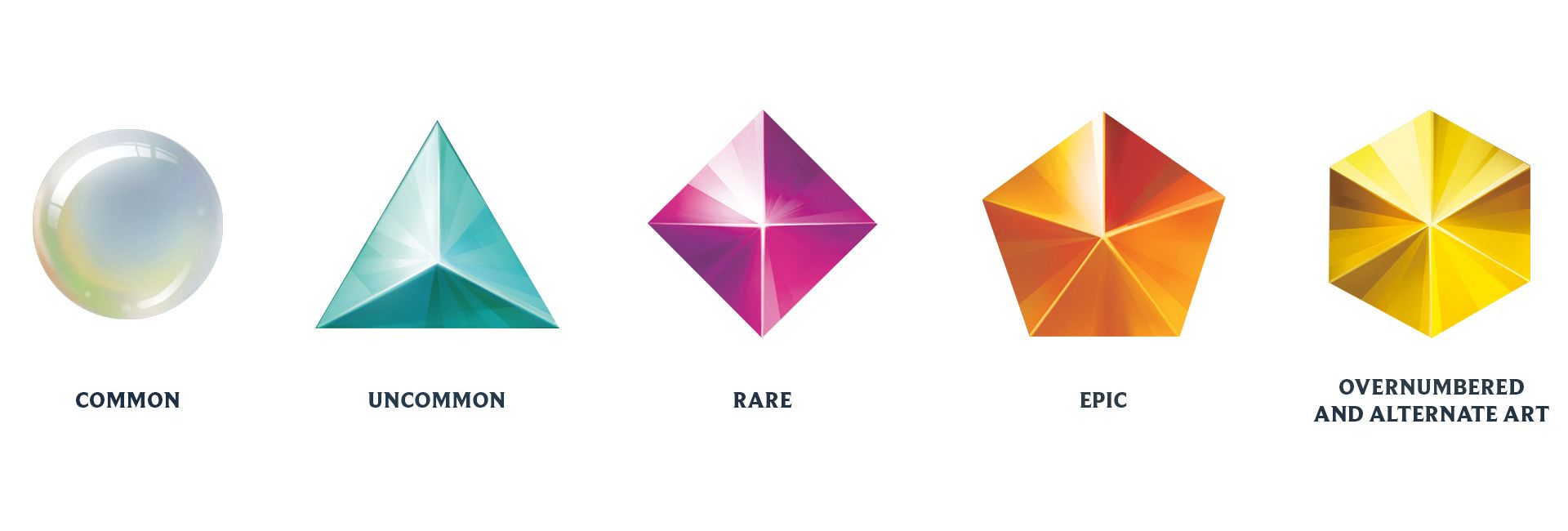
Card Rarity - Breakdown
So what’s in a pack? Well, each Origins Booster Pack contains…
- 7 Common card slots
- 3 Uncommon card slots
- 2 Rare (or better) card slots
- 1 Foil card slot
- 1 Token/Rune slot
- And an informational insert
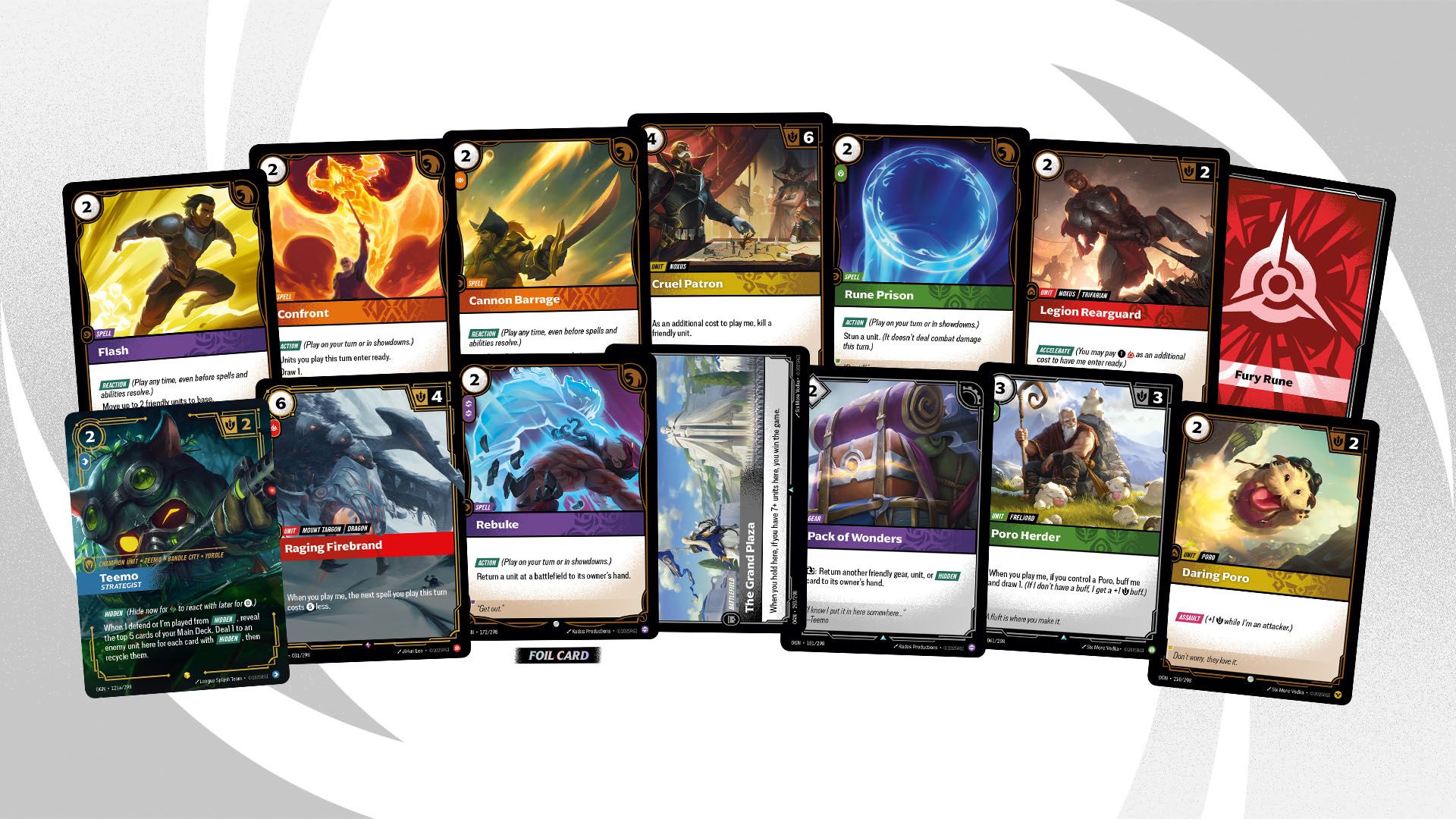
Let’s talk about what makes cards of different rarities different from one another!
Common Cards:
A Common card might be common, but that doesn’t mean it’s weak! Our goal with Common cards is that they are simple, clear, useful, and fill clear roles in your deck and strategy.

Uncommon Cards:
Uncommon cards tend to be a bit more complex, narrower in their use, or more synergistic. All of our Battlefields in Origins exist at Uncommon - we want players to have easy access to them, but you don’t need a lot of multiples for your collection.

Rare Cards:
Rare cards are designed to be exciting and powerful - you’ll feel it when one hits the table. All of our Champion Legends are Rares - we didn’t want them to be rarer than that, because we always want players to have access to the decks they want to play!
Each Champion Legend in Origins also has a Rare version of that Champion Unit for the same reason. Champion units that don’t have a corresponding Legend in the set, units we call “side champs,” also appear at Rare. Other Rares in the set tend to be that rarity because of their relative complexity.
Epic Cards:
Epics are our highest functional rarity, and will appear in approximately 1 out of every 4 booster packs. Champion Units and Signature Spells make up the majority of Epics, alongside some other spicy cards!
When Epic appear in a booster pack, they replace a card in the rare slot - that means it’s possible to have two Epics in the same booster!
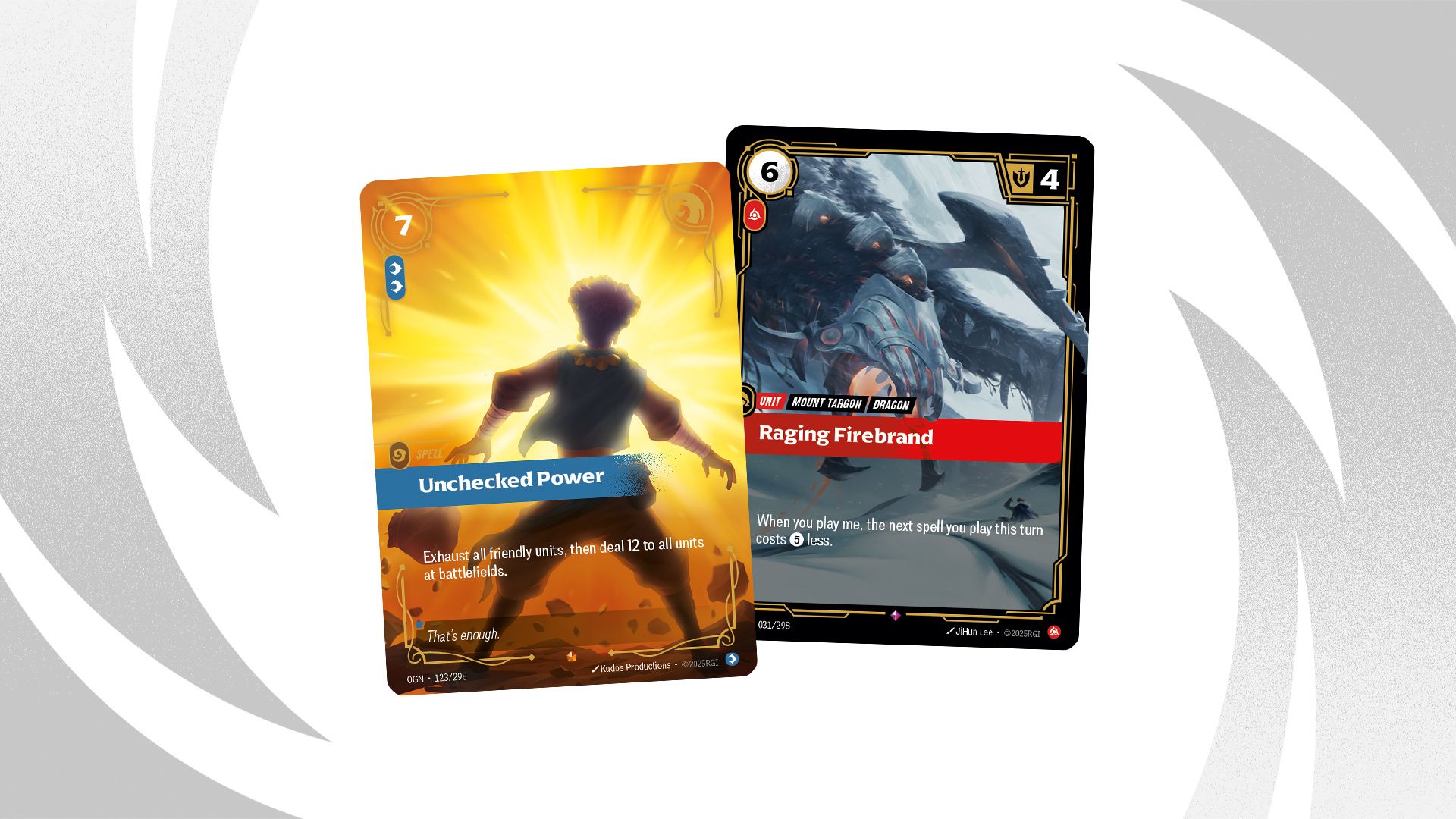
Foil Cards:
There will also be a dedicated Foil slot in every booster pack - most of the time this will be a foil common or uncommon, but this slot can also upgrade to Rare or Epic, allowing for some very exciting pulls! Every Rare and Epic will always be foil, so expect a good amount of shine in every pack. We’re really happy with how our foils turned out - they’re crisp, legible across the table, and customized to enhance the art of each Rare and Epic card.
Our goal with these functional rarities is to get players playing and deckbuilding as quickly and seamlessly as possible. But for collectors, the story doesn’t end here!
Alternate Art Cards:
For our 12 core champions, their associated Champion Units all also have an alt-art version. These alt-art versions show the champion off in a different League skin, with a more intricate foil treatment, and a special hexagonal gem symbol.
These are definitely rarer, but not impossibly so. These alt-art cards will appear at a rough rate of ~2 per box. Alt art cards are dispersed in such a way to be randomized and rare, but frequent enough to provide personalized play options for you and your fellow gamers. In fact, all rarities are dispersed in such a way that it’d be impossible to predict exactly what you’re getting. So when you crack a box with your friends or play a release event at a store, you’ll probably see these on an infrequent but regular basis.
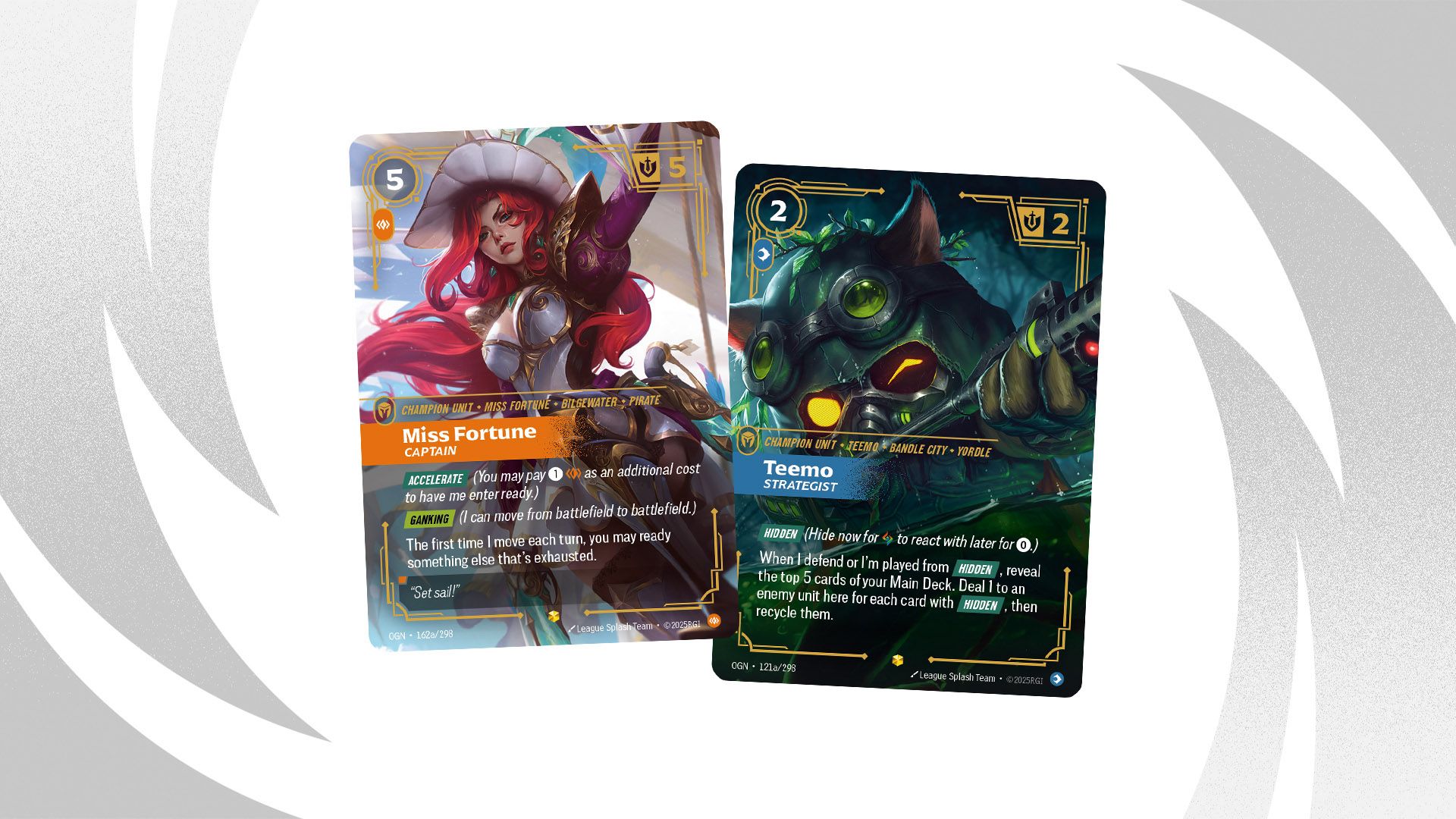
Overnumbered Cards:
For those same 12 core champions in Origins, we also have what we call Overnumber versions of the Champion Legend. These are special versions of these core cards that have been created by some of Riot’s own artists, showing off their favorite champions in their own style.
The foiling, UV treatments and texturing on these cards are nothing short of stunning, and we can’t wait for players to get their hands on them. These Overnumber cards will be appearing roughly one per three boxes, and we’re excited to see players’ reactions to them! And then, for the rarest of the rare, roughly one in ten Overnumbers will be a Signature Overnumber, emblazoned with a foil signature from the artist. They’re sure to be a thrilling capstone to anyone’s Origins collection!
But why call them Overnumber cards?
We refer to these as Overnumber cards because their collector number is above the set numbering. Origins has 298 cards in it, so Poro Herder, for example, is card 061/298. Our Overnumbers appear as cards 299 and above.
What does that mean? This indicates that they are not part of the set for determining legality. This concept is a bit of a deep cut for highly enfranchised TCG fans, so let’s break it down.
Basically, if we print a card in Set 1, and we reprint it as an Overnumber in Set 9, it doesn't count as a Set 9 card in terms of whether it can be played in tournaments. It's still considered just a set 1 card.
But, if we had printed that same card within that set, as a non-Overnumber card, it would be a Set 9 card for tournament legality.
We will do many reprints at this rarity that do not reset the card’s legality for format purposes, so if you have a favorite card, watch out because it could be reprinted as an Overnumber in a future set!
We also believe that Overnumbers should remain special into the future. That means we will never reprint an Overnumber that we’ve printed before with the same art and frame. Overnumbers will remain unique collectibles far into the future.
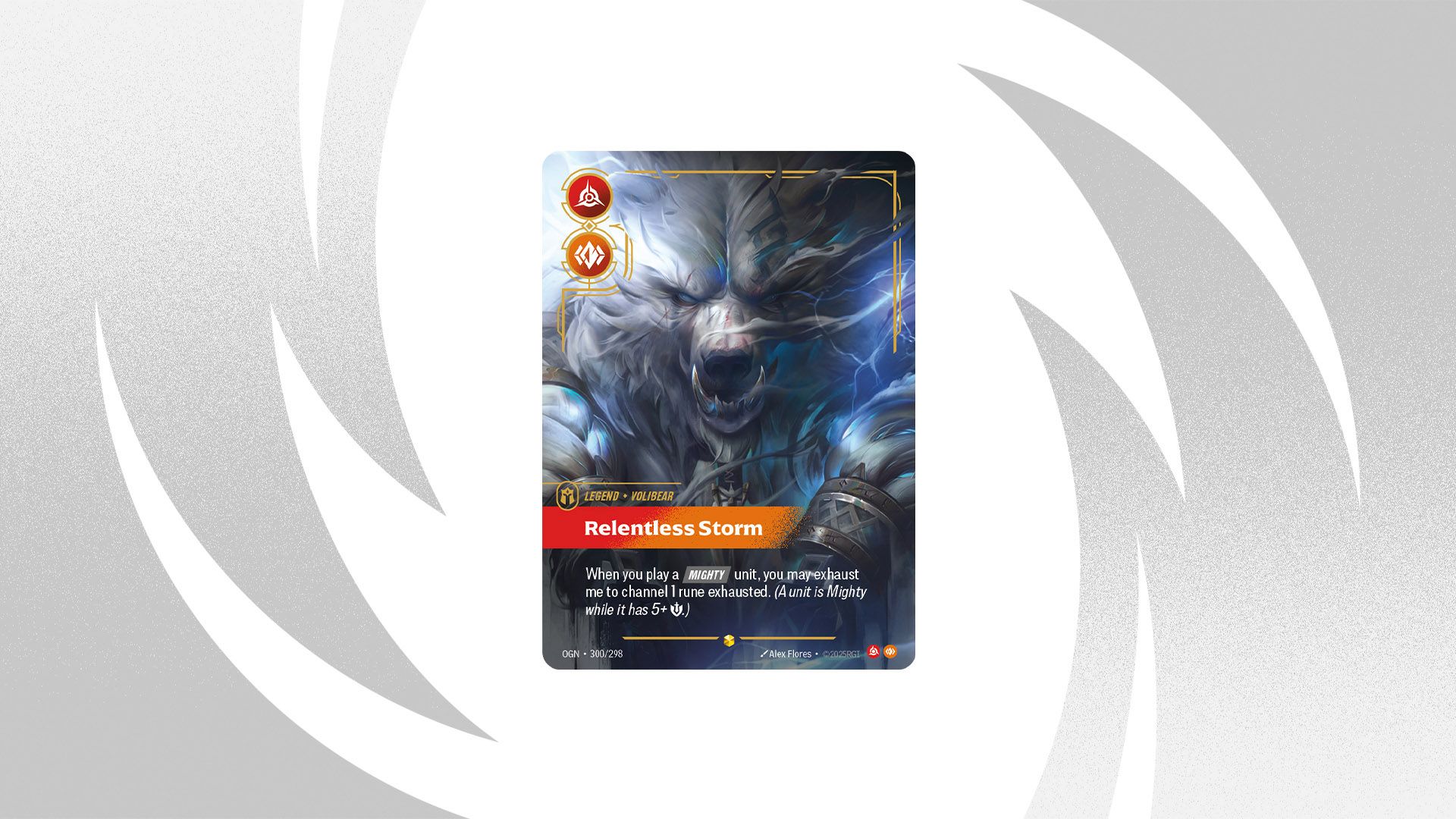
Rune Cards:
Oh, and that Rune slot? You’ll occasionally see foil versions of the Runes, and very rarely, a special alt-art basic rune. So don’t skip over it too fast!
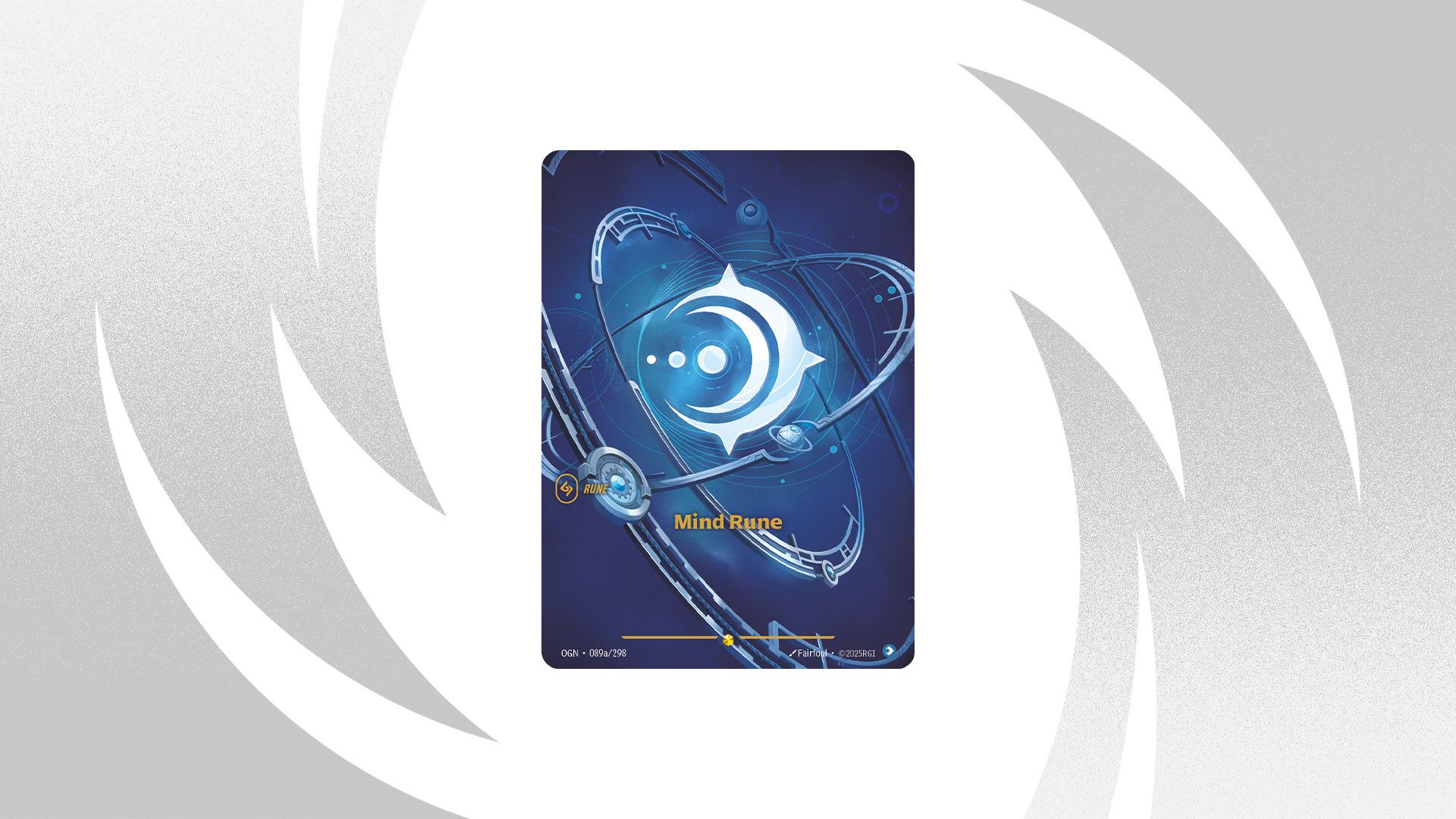
As Riftbound’s launch draws ever closer, we’re eager to hear your feedback on our plans as both players and collectors - what are you most hoping to see peeking out from your first booster?
Trial Decks:
As a final note, many of you have had a chance to try out our new Trial decks at events like MSI in Vancouver. The newest Trial Decks are a part of our development process, but do not represent our final cardstock, varnish, inking, or overall level of quality. We hope you still enjoyed them though!
Summary:
That's all for today, as always we're making this game for you, the players, and are always looking to hear feedback and thoughts on how to make playing - and collecting - Riftbound as awesome as possible.